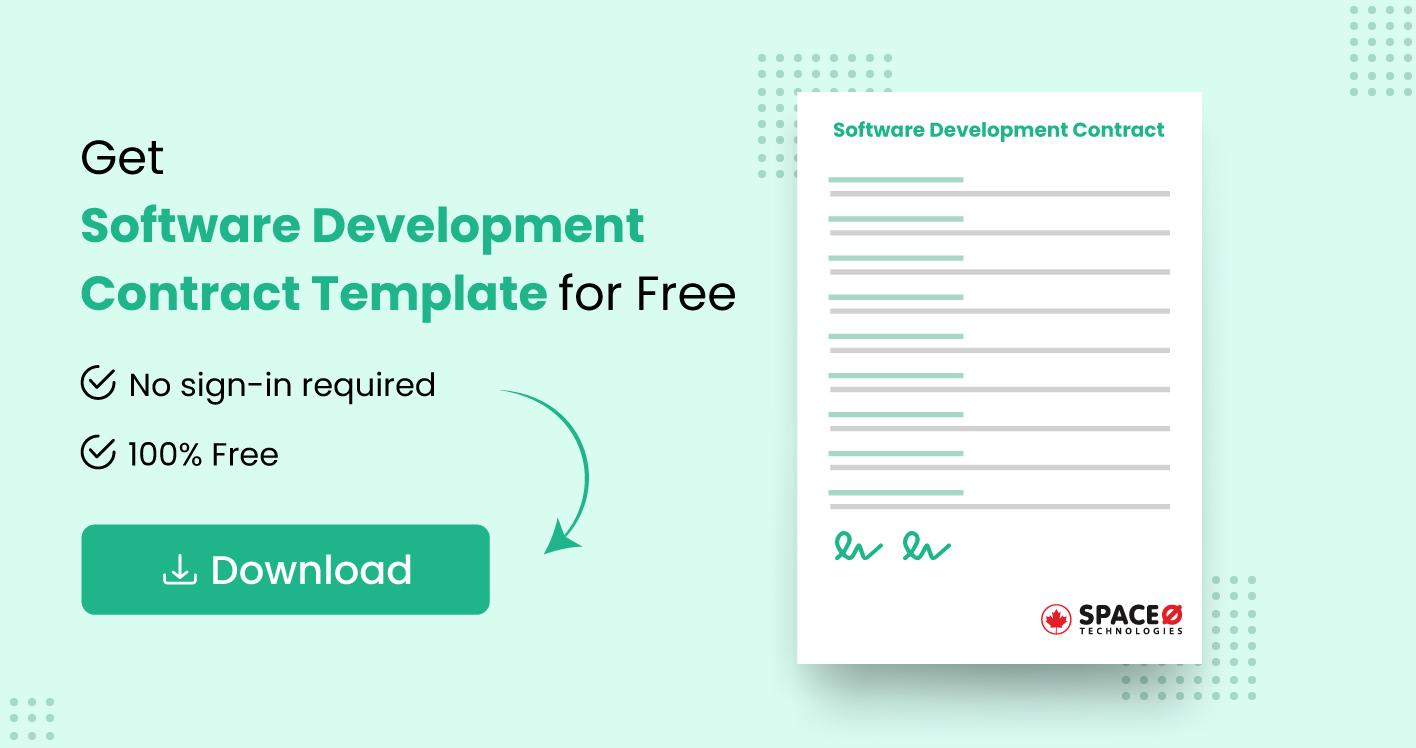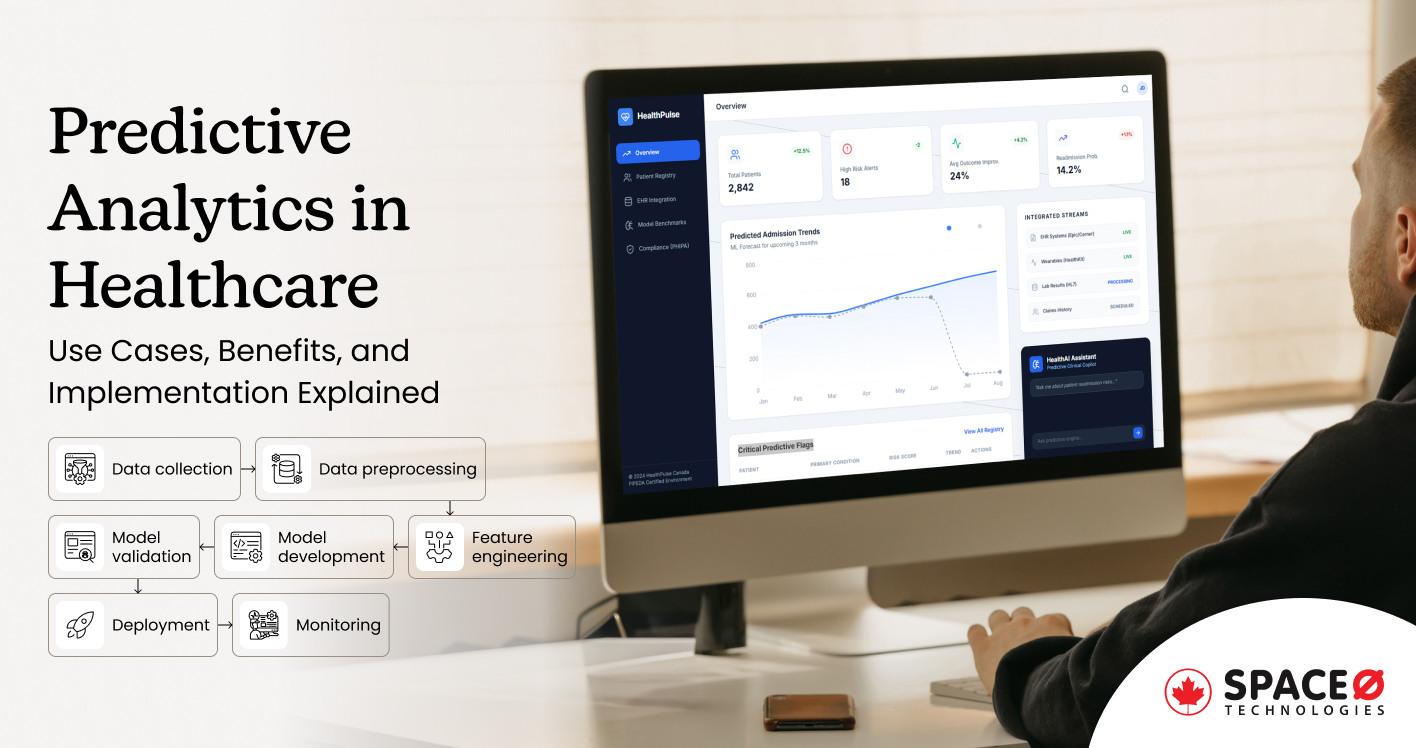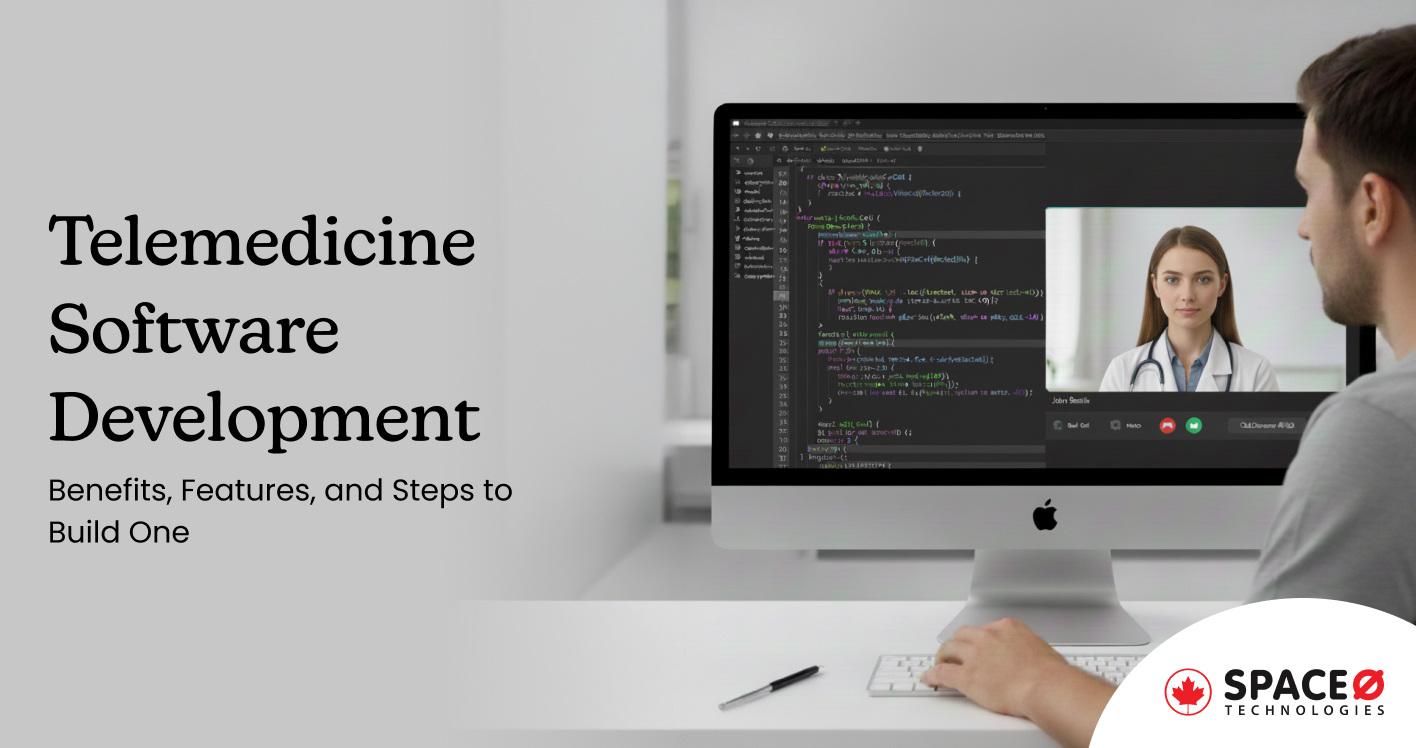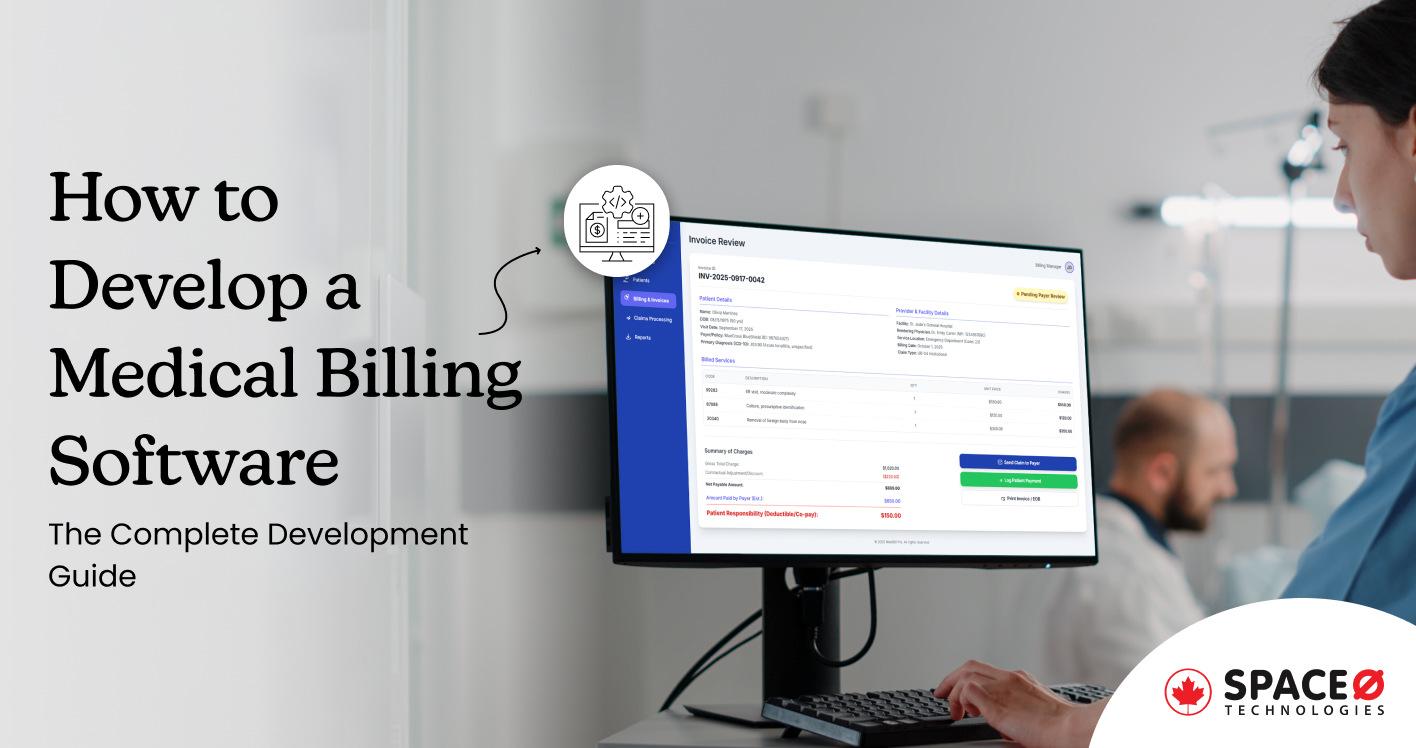
Software Development Contract: Everything You Need to Know
If you want to protect your software development project, your intellectual property, or your investment. Then a software development contract is the best solution to your concerns.
As a leading bespoke software development company, we know that drafting a software development contract is not an easy task.
To help you deal with this situation, we have created this comprehensive guide to guide you through all the aspects of a software development contract.
In this article, you will learn:
- The elements of a software development agreement.
- Different types of software development contracts.
- How to choose the cost structure that fits your budget.
- Legal considerations for software development agreements.
Let’s begin.
Table of Contents
A Free Software Development Contract Template
A complete software development contract may be difficult to write, but we are happy to provide you with a template that is both free and customizable to help you get started. Understanding legal terminology, industry norms, and project-specific details is necessary.
This template aims to make drafting a contract easier by ensuring that you cover all important areas of your software project agreement. Here is a free and customizable software development agreement to download.


Why Consider a Free Template for a Software Development Agreement?
- Saves time and effort by offering a ready-to-use contract framework.
- Ensures comprehensive coverage of contract elements.
- Includes legal considerations to ensure compliance with laws and regulations.
- Enhances transparency, making contract terms clear and understandable.
- Allows easy customization to fit specific project needs, maintaining flexibility.
This free template makes creating your software development agreement easier, encourages teamwork, and helps software projects succeed. So, why are you waiting? Download and personalize the template for a smooth start.
Let’s discuss the types of software development contracts.
3 Types of Software Development Contracts
Before you decide on a software development agreement, selecting the right software development company is important. The process of hiring a software development company includes multiple steps. To help you know each step in detail, you can check out this blog on how to hire a software development company.
Now, let’s check out the types of software development contracts.
Fixed-cost Software Development Contracts
A fixed-cost contract is an agreement in which the client and the software development business agree on a fixed price for the whole project. Regardless of the expenditure of both time and money for development, this pricing remains constant.
Pros and Cons of Fixed-cost Software Development Contract
Pros Cons Provides a predictable budget, assuring clients of financial control throughout the project. Limited flexibility makes it challenging to accommodate unexpected scope changes. Clearly defines project scope and deliverables, minimizing misunderstandings and disputes. Scope changes lead to costly change requests, affecting the project timeline. Low financial risk for the client with a fixed price, offering peace of mind regarding budget constraints. Quality is compromised to meet budget constraints in certain cases, impacting the final product. Creates a strong incentive for timely project delivery, as a software developer aims to meet milestones to avoid penalties. – When to Choose Fixed Cost Software Development Contract?
- When you have a well-defined project scope, clear objectives, and minimal expected changes.
- Opt for this model when you have a tight budget and timeline, emphasizing cost control.
Time and Materials Software Development Contracts
A time and materials contract includes payment for the actual time spent on development and the materials or resources utilized. This contract type allows flexibility since the project scope might change throughout the project. To effectively manage such contracts, you must first comprehend the entire software development process.
Pros and Cons of Fixed-Cost Software Development Contract
Pros Cons Offers flexibility to adapt to evolving requirements, allowing projects to stay aligned with changing needs. Potential for budget overruns if not carefully managed and monitored throughout the project. Provides transparency in billing for clients, allowing them to see the allocation of the resources. This contract relies on trust and effective monitoring of project progress, which can be challenging in some cases. Encourages continuous client involvement, fostering collaboration and ensuring the project meets expectations. Clients feel like they have less control over the costs, as expenses depend on the time and resources invested. Adopts an agile development approach, enabling the project to adapt to emerging insights and market shifts. – When to Choose Time and Materials Software Development Contract?
- When the scope of your project is susceptible to change or undetermined at the beginning.
Dedicated Team Software Development Contract
A dedicated team contract involves hiring a dedicated team of developers, designers, and specialists who work only on your project. This team works as an extension of your internal team, providing long-term cooperation.
Apart from a dedicated team, if you want to know the cost associated with hiring a software developer for your project you can check out our blog on the cost of hiring a software developer. This blog will help you manage your budget and make better decisions. Let’s check out the pros and cons of a dedicated team contract.
Pros and Cons of a Dedicated Team Software Development Contract
Pros Cons Involves a highly skilled and committed team, ensuring the project benefits from expertise and dedication. Incurs ongoing operational costs, which can add up over time, impacting the project’s financial sustainability. Offers scalability and flexibility as needed, allowing teams to expand or contract based on project demands. Initial team onboarding may require time, potentially delaying the project’s start. Promotes close collaboration and communication, which results in a strong partnership and shared goals. Offers less direct control over individual team members, as they operate semi-autonomously. Builds long-term partnership and rapport between the client and the dedicated team, leading to deeper understanding and smoother project execution. – When to Choose a Dedicated Team Software Development Contract?
- A dedicated team contract is appropriate for long-term or continuing software development over the development team.
Ready to Choose the Right Software Development Contract?
Let us guide you through the process. Our professionals will help you make a better decision that suits your project’s needs and objectives.

Let’s discuss the steps of choosing the cost structure for your software development project.
How to Choose the Right Cost Structure for Your Software Development Project
Before choosing the cost structure for your project, you might be thinking about the cost involved in the software development. If you want to get the exact cost of your software development, you can check out our blog on the software development cost. This will help you know the exact cost and the factors influencing the software development cost.
Let’s cover the steps to choose the cost structure for your software development contract.
Define Project Duration and Scope for Cost Structure
The first thing you need to do is to consider how long your project will last.
- A fixed-cost contract may be the best option for a short-term project with defined goals.
- However, for long-term projects with changing requirements, flexibility is essential.
Also, precisely define your project’s scope. Outline the tasks that need to be finished, feature by feature.
Tip
Consider using visual aids, like diagrams or charts, to illustrate the project scope, which makes it easier for all the team members to understand.
Consider Budget Constraints and Options
Be realistic about the financial resources you have available. Fixed-cost contracts have predictable costs, while time and materials contracts have a more flexible budget range.
You need to check if your budget can accommodate future cost adjustments. Time and materials contracts provide flexibility but may need careful budget management.
Seek Expert Input from the In-house Team or Contractors
In this step, you need to seek expertise from your in-house team or external contractors. Here are the points you need to consider.
- Leverage their collective experience to evaluate cost structures.
- Discuss pros and cons based on project complexity and goals.
- Consider their input, especially for projects involving advanced technology.
- Collaborate to identify potential risks and mitigation strategies.
Involving your team or possible contractors might help you decide on the most appropriate pricing structure for your software development project. If you want to get expert guidance for your software development project, you can contact Space-O Technologies. Being a leading software development firm we can help you provide a secure approach for your software development needs.
Visualize the Decision with Matrices or Flowcharts
At last, you need to create a decision matrix by considering aspects such as project scope, budget, flexibility, and team competence. Assign values depending on the priorities of your project. This visual tool makes it easier to identify the benefits and drawbacks.
Make flowcharts to map out the development process of the project. Examine how it corresponds to your selected cost structure. This visualization simplifies the decision-making process.
Tip
Make sure to add real project data and criteria into your decision matrix to make it a precise and actionable tool for decision-making.
Let’s discuss the elements of a software development agreement.
10 Elements of Software Development Contracts
Before covering each element in detail, check out this table containing an overview of the elements of a software development agreement.
| Element | Details |
|---|---|
| Scope of Work | Describes the software, features, functionalities, milestones, deadlines, and acceptance tests. |
| Intellectual Property Rights | Outlines ownership and use of copyrights, trademarks, patents, trade secrets, and third-party materials. |
| Payment Terms and Conditions | Details fee structure, payment schedule, currency, method, and conditions for payment adjustments. |
| Warranty and Liability | Specifies warranties for quality, performance, support obligations, and limitations of liability. |
| Confidentiality and Data Protection | Defines confidential information, data handling, and compliance with privacy laws. |
| Delivery and Acceptance | Sets expectations for software delivery, conformance to specifications, and acceptance procedures. |
| Change in Specifications | Describes the process for changes, their impact on delivery and costs, and associated rights and responsibilities. |
| Dispute Resolution | Outlines methods for resolving conflicts, applicable law, jurisdiction, and dispute resolution costs. |
| Termination | States the conditions for contract termination and the rights and obligations upon termination. |
| Maintenance and Support | Details post-delivery maintenance and support terms, including hours and rates for additional support. |
This table shows the key elements of a software development agreement to establish a clear and binding agreement between the client and the software developer. Let’s discuss each in detail.
Defining the Project Scope and Deliverables
Software development agreements must include a statement of purpose and goals. This makes it easy to understand the intended purpose of the project and what the development team would need to accomplish. Here are some points to consider.
- Discuss the project’s goals, specific features, and any restrictions.
- List the concrete results you want the development team to achieve.
- Deliverables must include software modules, documentation, user interfaces, and other project-related deliverables.
A well-defined project scope and deliverables guarantee that everyone involved is on the same page about the project’s objectives and help avoid scope creep.
Ownership and Rights of Intellectual Property
Securing the project’s outcomes and the software’s future usage depends on identifying ownership and intellectual property rights. Here are some points to consider.
- Specify who will be the proprietor of any intellectual property created throughout the project.
- Ownership may be passed to the software developer, the customer, or by mutual consent, depending on the terms of the agreement.
- Outline the respective rights that each party has with the intellectual property.
- This covers the software’s usage, modification, licensing, and distribution capabilities.
Clear ownership and rights agreements protect the client’s investment and the efforts of a software developer, providing a seamless post-project relationship.
Structured Payment Terms and Conditions
Structured payment terms and conditions are necessary for keeping track of money and being responsible for the project’s budget.
- Outline the payment plan, including payment dates, amounts, and any milestone payments.
- Make sure the timeline corresponds to the project’s goals and outputs to encourage efficiency.
- Specify the permitted payment methods, such as bank transfers, credit cards, or other ways.
- Indicate the desired currency for overseas payments.
Clear payment conditions help to avoid disagreements by keeping both parties informed of their financial commitments and expectations.
Warranties, Guarantees, and Liability Limitations
Including warranties, guarantees, and liability restrictions protect both parties and assure the software’s quality and dependability.
- Mention any warranties that may apply to the software’s functionality and quality.
- Specify how long these warranties will last and what features of the software the warranties will cover.
- Discuss the developer’s promises, such as sticking to deadlines or achieving specific performance.
- Define your responsibility limitations in the case of project delays, flaws, or other unanticipated situations.
- Describe the financial obligations and possible remedies in the event of a disagreement.
Clear warranties and guarantees create trust, while clearly stated liability limits reduce financial risks.
Confidentiality and Non-disclosure Agreements
Confidentiality and non-disclosure agreements help protect sensitive project information and intellectual property.
- Implement strict measures to protect proprietary software, private data, and project-specific information.
- Include an additional NDA if required to guarantee that the client’s sensitive information is safe and not revealed to other parties.
Confidentiality and nondisclosure agreements (NDAs) safeguard sensitive information, which promotes trust and safety in the development relationship.
Criteria for Software Delivery and Acceptance Testing
Defining criteria for software delivery and acceptance testing guarantees that the project fulfills the quality requirements.
- Criteria include functionality testing, performance benchmarks, and documentation thoroughness.
- Describe in detail the methods for acceptance testing.
- Specify who will perform the tests, the success criteria, and any retesting processes in case of non-compliance.
As you define delivery and testing criteria, it ensures that the software satisfies the expectations and functional needs of the client.
Change Request and Modification Procedures
Including transparent change requests and modification procedures facilitates the efficient management of project adjustments.
- Describe the procedure for proposing and approving modifications to the project scope, deliverables, or other contract provisions.
- Specify who will make changes and the process to review changes.
- Discuss contract modification recording, agreement, and project integration.
- Determine each party’s roles and responsibilities throughout the transformation process.
Establishing well-defined protocols for change requests and modifications guarantees that any project modifications are implemented in a structured way.
Dispute Resolution Mechanisms
Creating processes for resolving disputes is necessary for handling any problems or arguments that may come up throughout the project.
- Specify the conflict resolution mechanisms, such as negotiation, mediation, arbitration, or legal action.
- Outline each phase in the dispute resolution procedure.
Specified methods for dispute resolution provide an organized and fair way to resolve issues while minimizing project delays.
Termination Conditions and Consequences
Addressing termination conditions and consequences ensures that both parties are informed about the circumstances under which the contract ends and the repercussions of doing so.
- Define the circumstances that allow either party to terminate the contract, such as non-performance, violation of contract, or other possibilities.
- Indicate the length of the termination notice period.
- Specify the repercussions of contract termination, such as the return of project assets, the settlement of overdue payments, and the post-termination of intellectual property rights.
Termination conditions and consequences give a framework for an efficient conclusion of the agreement while respecting both parties’ interests.
Post-delivery Support and Maintenance Terms
Defining post-delivery support and maintenance arrangements guarantees that the software stays functioning and maintained after completion.
- Clarify the parameters of post-delivery assistance, including response times, problem-resolution methods, and related expenses.
- Indicate when updates and patches will be available and the length of the support.
Comprehensive post-delivery support and maintenance conditions facilitate client’s access to continuing assistance that helps them maintain the software’s functionality.
Let’s discuss the legal considerations you need to consider for your contract.
Legal Considerations for Software Development Contracts
A software development contract involves more than just outlining the project’s details and payment conditions. If you want your contract to be strong, following the law, and flexible enough to handle every scenario, you must seek legal advice.
Here is a table containing information about legal considerations to help you get a clear idea.
| Legal Consideration | Explanation |
|---|---|
| Clarity in Language |
|
| Unexpected Events Clause |
|
| Compliance with Local Laws |
|
| Law and Jurisdiction |
|
| Insurance Protection |
|
Your software development contract is more legally sound, helps reduce the risks, and guarantees compliance with relevant regulations by adding these legal factors.
Looking to Secure Your Software Development Process?
Our team of experienced developers, designers, and consultants ensures your software is developed with the most secure approach.
6 Tips for Drafting a Software Development Agreement
Here are the tips for drafting a software development agreement.
Ensure a Progressive Payment Structure
- Make sure your payment schedule is attached to project milestones. In simple terms, pay after the completion of specific project phases.
- To ensure payments match actual project progress, clearly define the conditions that must be met before each payment is released.
Specify IP Ownership and Licensing
- Define intellectual property (IP) ownership, transfer, or licensing terms, specifying whether the client receives full intellectual property rights or a limited license.
- Detail how intellectual property rights extend to derivative works, modifications, and the use of underlying software code.
Implement Robust Confidentiality Agreements
- Implement robust confidentiality agreements that contain all project-related information, source code, and proprietary data.
- Outline how confidential information will be handled, stored, and protected to safeguard sensitive project details.
Streamline Change Management Procedures
- Establish efficient change management procedures that outline the submission, review, and approval process for change requests.
- Specify how changes will be documented, and assessed for impact on project timelines and budgets.
Define Clear Termination Protocols
- Define conditions under which either party can terminate the contract, including non-performance or breaches.
- Specify the dispute resolution mechanisms, asset transfer procedures, and post-termination support, ensuring a clear exit strategy.
Ensure Legal Compliance
- Ensure the contract complies with all relevant local laws, industry regulations, and intellectual property rights.
- Seek legal expertise to review and validate the contract, making it legally enforceable and minimizing legal risks.
Let’s discuss a few FAQs about software development agreements.
FAQs About Software Development Contract
Why do you need a software development contract?
Here are the reasons why you need a software development contract.
- Legally binds both parties by detailing their rights, obligations, and liabilities. This safeguard is critical in the event of a disagreement.
- Defines the project’s scope, deliverables, deadlines, and milestones in detail. This helps to reduce misconceptions and scope creep.
- Specifies ownership and use rights for intellectual property developed throughout the project, protecting both parties’ interests.
- Establishes explicit dispute resolution methods to ensure that any disputes or disagreements are resolved methodically and effectively.
What happens if someone breaches the software development contract?
Here are the actions to take when someone breaches the software development contract.
- The non-breaching party may bring legal action to enforce the contract or seek compensation for losses suffered.
- The contract may be terminated, depending on the seriousness of the violation. The contract should specify the contract terms and consequences of termination.
- Alternative conflict resolution techniques, such as mediation or arbitration, can be used by the parties to address the problem without resorting to litigation.
Can a software development contract be modified once it’s signed?
Yes, you can change a software development contract after it is signed.
However, this modification demands the joint consent of both parties. You need to conduct contract modification following predetermined change request procedures. Record, authorize and integrate any modifications made into the contract.
Create a Software Development Contract for Your Business
Now you know everything related to a software development agreement. This guide has helped you to understand the elements to include in a software development agreement. Not only that, it also covered all the types of agreements, how to select cost structure, legal considerations for the contract, and things to consider while drafting the contract.
Along with these, you also have a customizable template available, saving you time and effort. Apart from the contract, if you are looking for a reliable software development company that considers such agreements, we can help you.
Being in the software development industry for 7+ years, we understand the importance of software development agreements. Let’s connect and discuss your project requirements.

Looking for Reliable Software Developers?
Editor's Choice

Predictive Analytics in Healthcare: Use Cases, Benefits, and Implementation Explained

Telemedicine Software Development: A Complete Guide to Building Remote Healthcare Platforms

Medical Billing Software Development: The Complete Guide for Healthcare Providers
All our projects are secured by NDA
100% Secure. Zero Spam
*All your data will remain strictly confidential.
Trusted by


Bashar Anabtawi
Canada
“I was mostly happy with the high level of experience and professionalism of the various teams that worked on my project. Not only they clearly understood my exact technical requirements but even suggested better ways in doing them. The Communication tools that were used were excellent and easy. And finally and most importantly, the interaction, follow up and support from the top management was great. Space-O not delivered a high quality product but exceeded my expectations! I would definitely hire them again for future jobs!”

Canada Office
2 County Court Blvd., Suite 400,
Brampton, Ontario L6W 3W8
Phone: +1 (437) 488-7337
Email: sales@spaceo.ca

